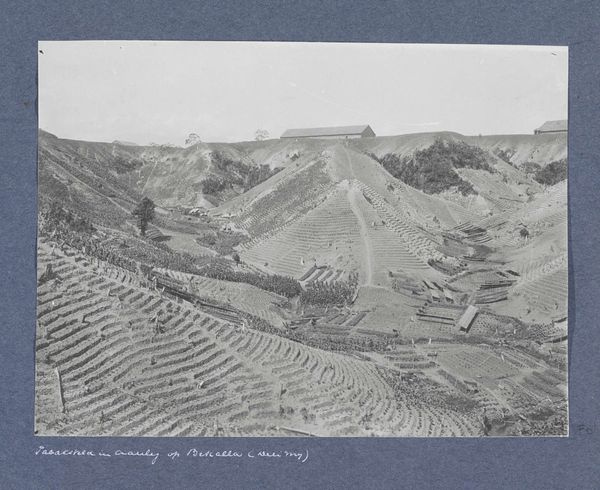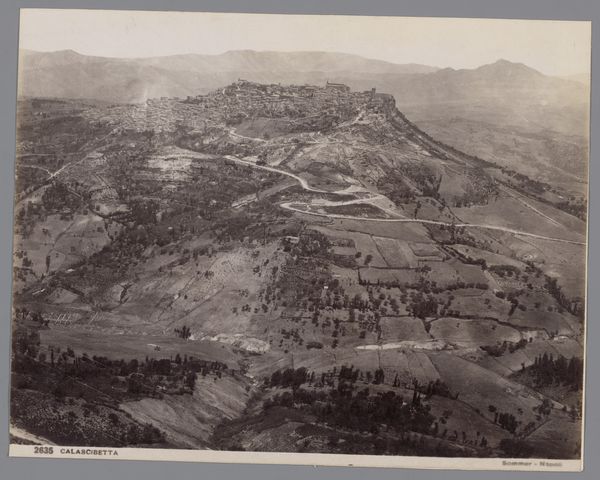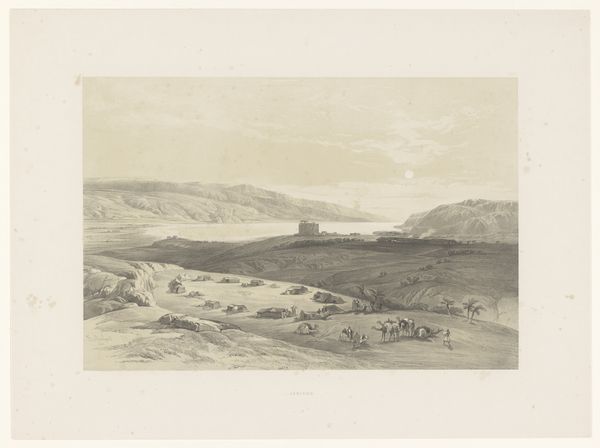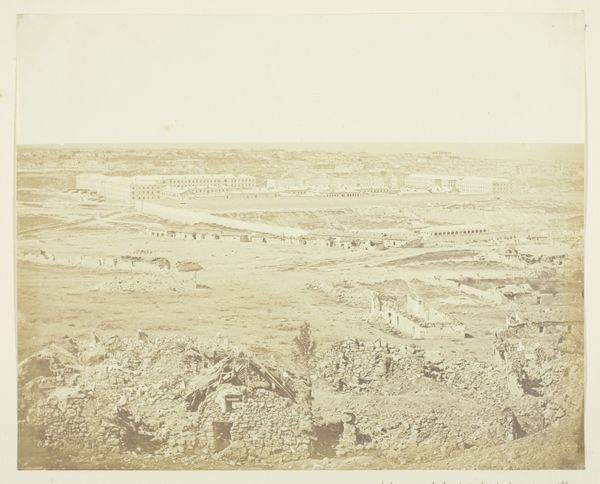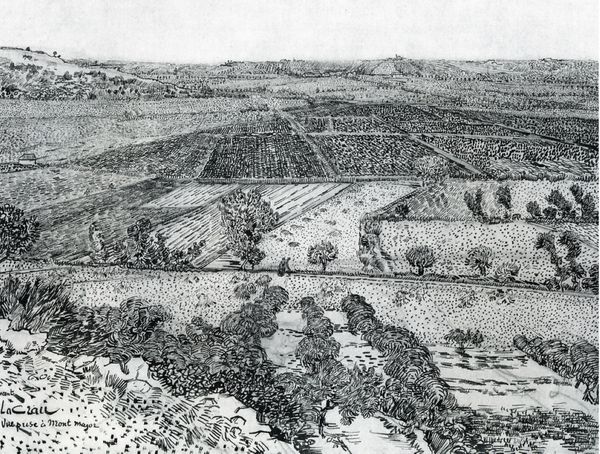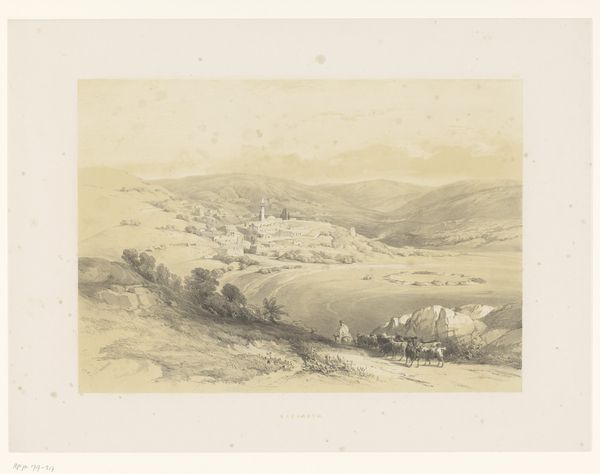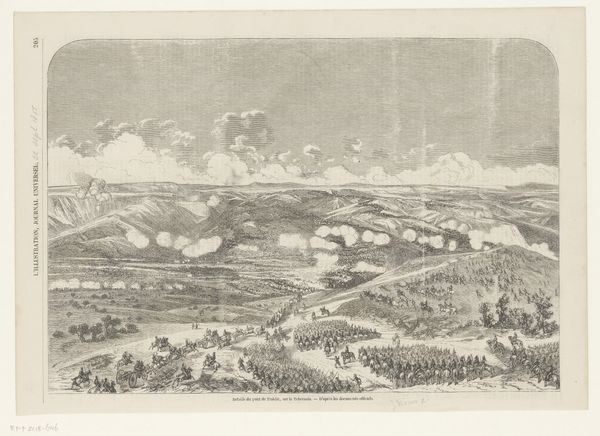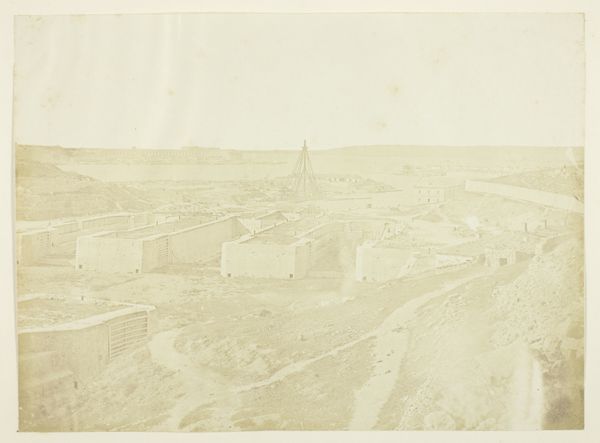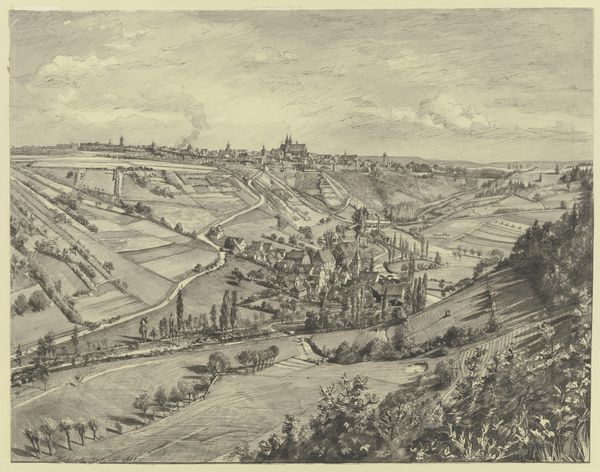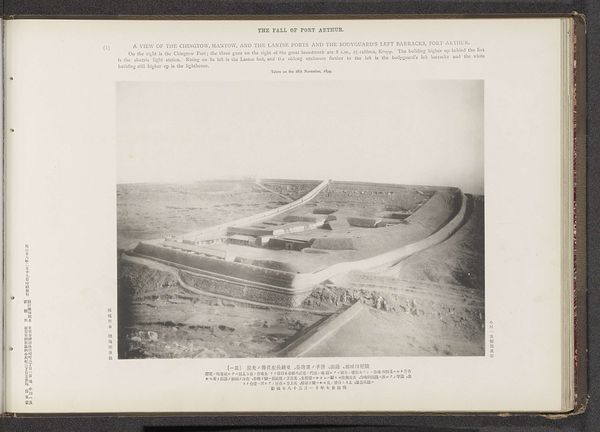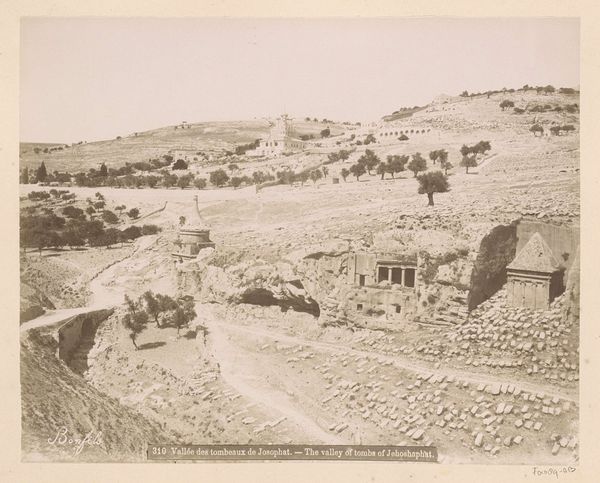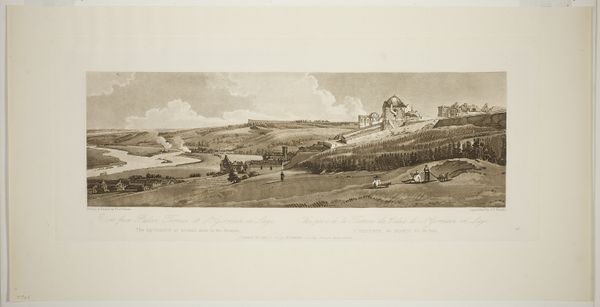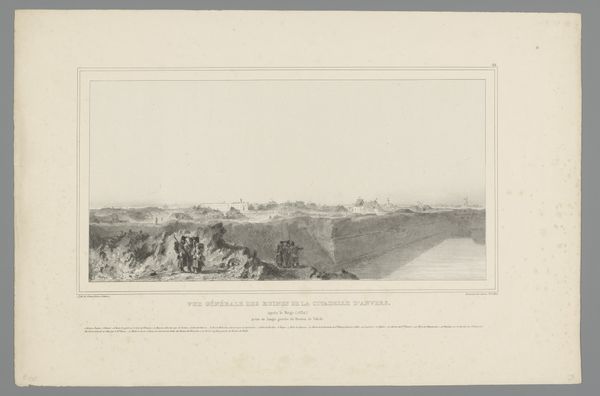
#
pencil drawn
# print
#
pencil sketch
#
asian-art
#
landscape
#
pencil drawing
Dimensions: height 191 mm, width 290 mm
Copyright: Rijks Museum: Open Domain
Editor: Here we have "Tabaksvelden op de heuvels van Sumatra," or "Tobacco Fields on the Hills of Sumatra," created by Carl J. Kleingrothe before 1898. It's a drawing, a print, using pencil, and it just looks so…orderly. Almost regimented in the way the fields are laid out. What’s your take on this work? Curator: This piece really speaks to the complexities of colonialism. It depicts a seemingly serene landscape, but it's important to remember that these tobacco fields were part of a larger system of exploitation. These landscapes were often romanticized in Western art, masking the harsh realities of labor and the power dynamics at play. Editor: So, it's not just a pretty picture of fields? Curator: Exactly. We have to consider the social and economic context. The demand for tobacco in Europe and America fueled the expansion of these plantations, impacting indigenous populations and local economies. Who owned the land, and who benefitted from the cultivation of these crops? Editor: I see… So, this seemingly simple drawing actually opens up a whole can of worms related to global trade and colonial power. Did art of this kind ever play a part in promoting such activities? Curator: Absolutely. Images like these could legitimize colonial endeavors. By portraying these landscapes as productive and orderly, they conveniently omitted the human cost and the disruptions to the local culture and ecology. Do you see any evidence of local Indonesian people at work? Or their communities and homes represented? Editor: Now that you mention it, I don't. It’s as though the land exists as empty space until cultivated for the Western market. Something for me to reflect on… Curator: Indeed. Art can be a powerful tool to maintain existing power structures, if we allow it to. Thank you for your curiosity on this point!
Comments
No comments
Be the first to comment and join the conversation on the ultimate creative platform.
